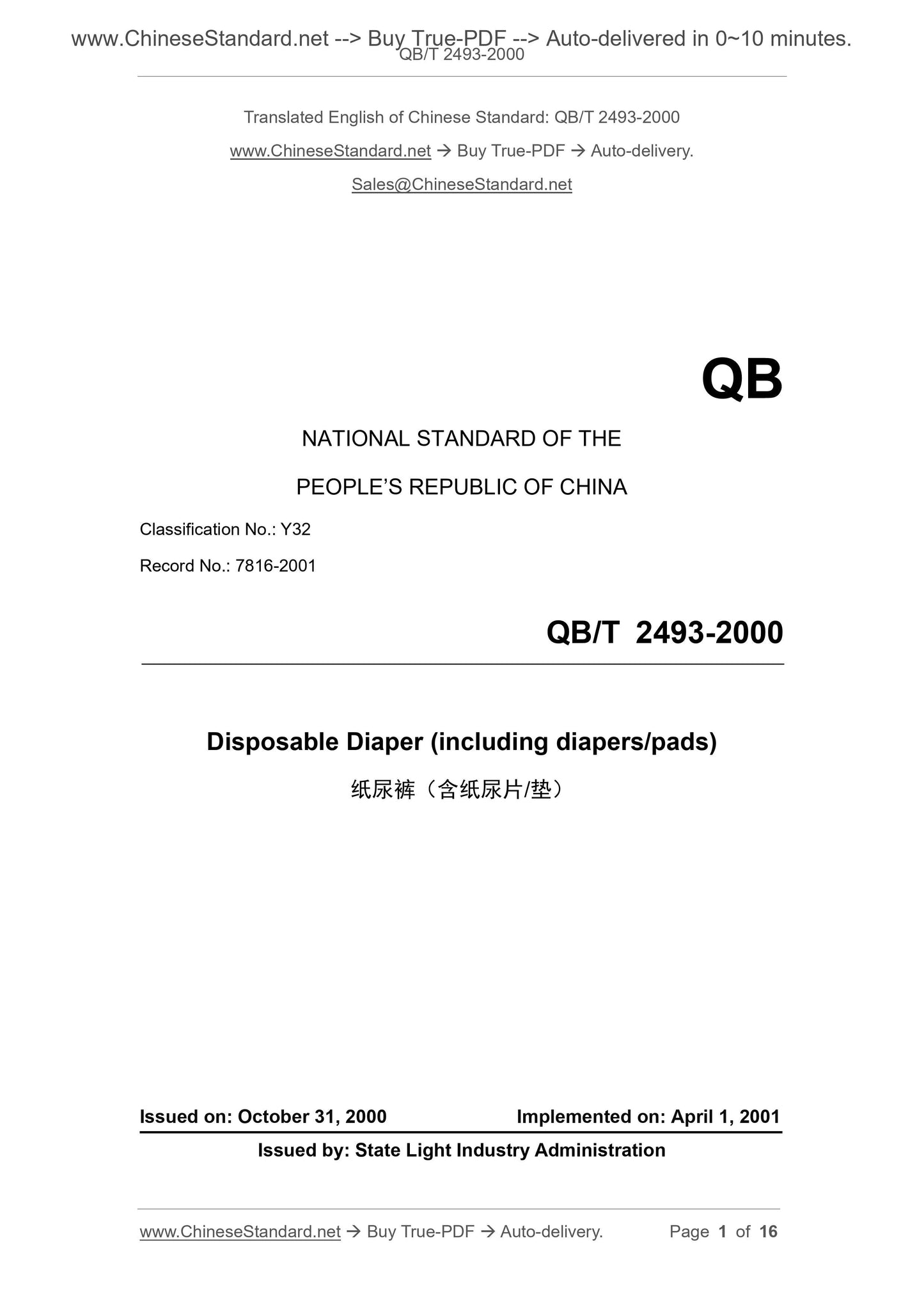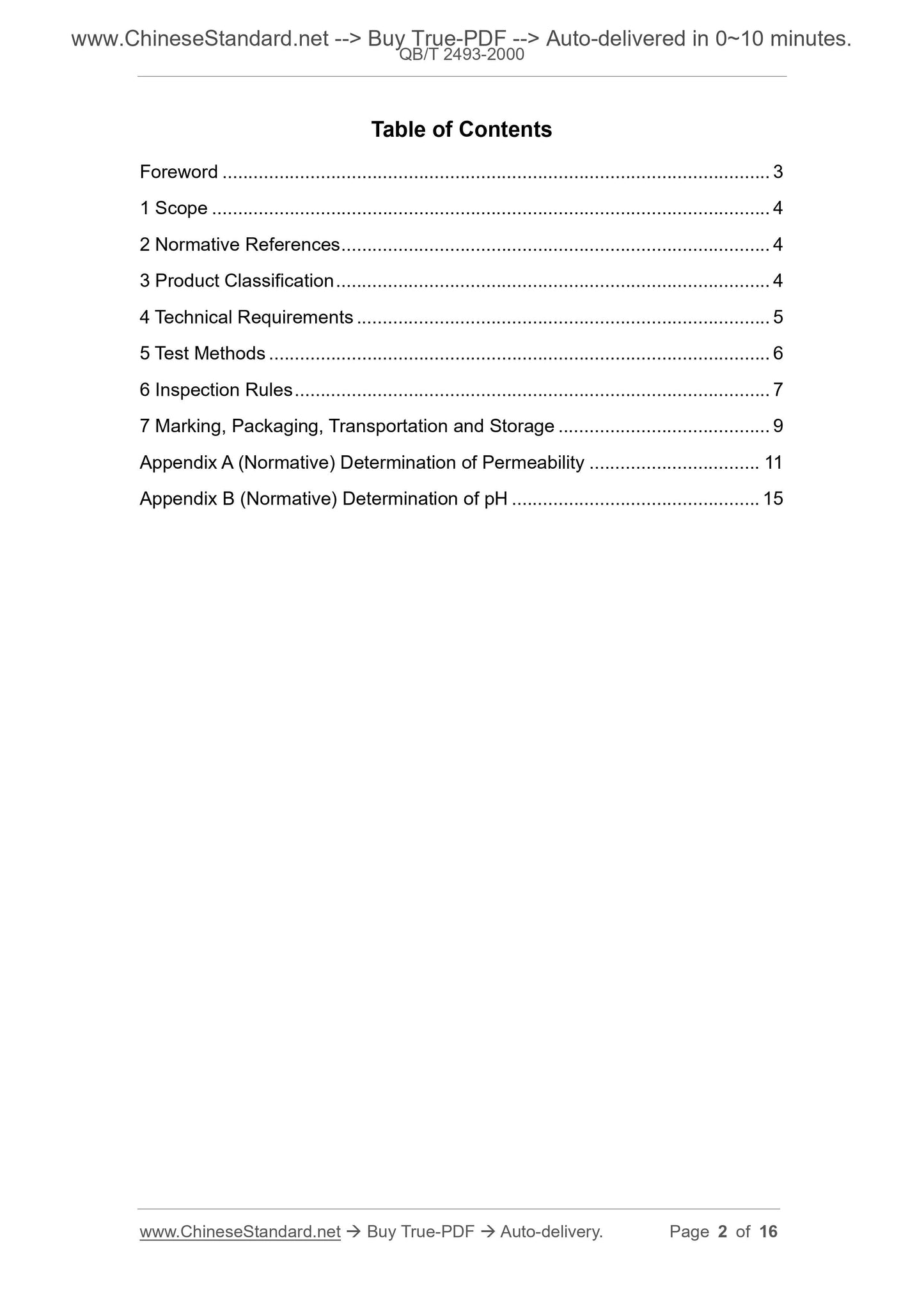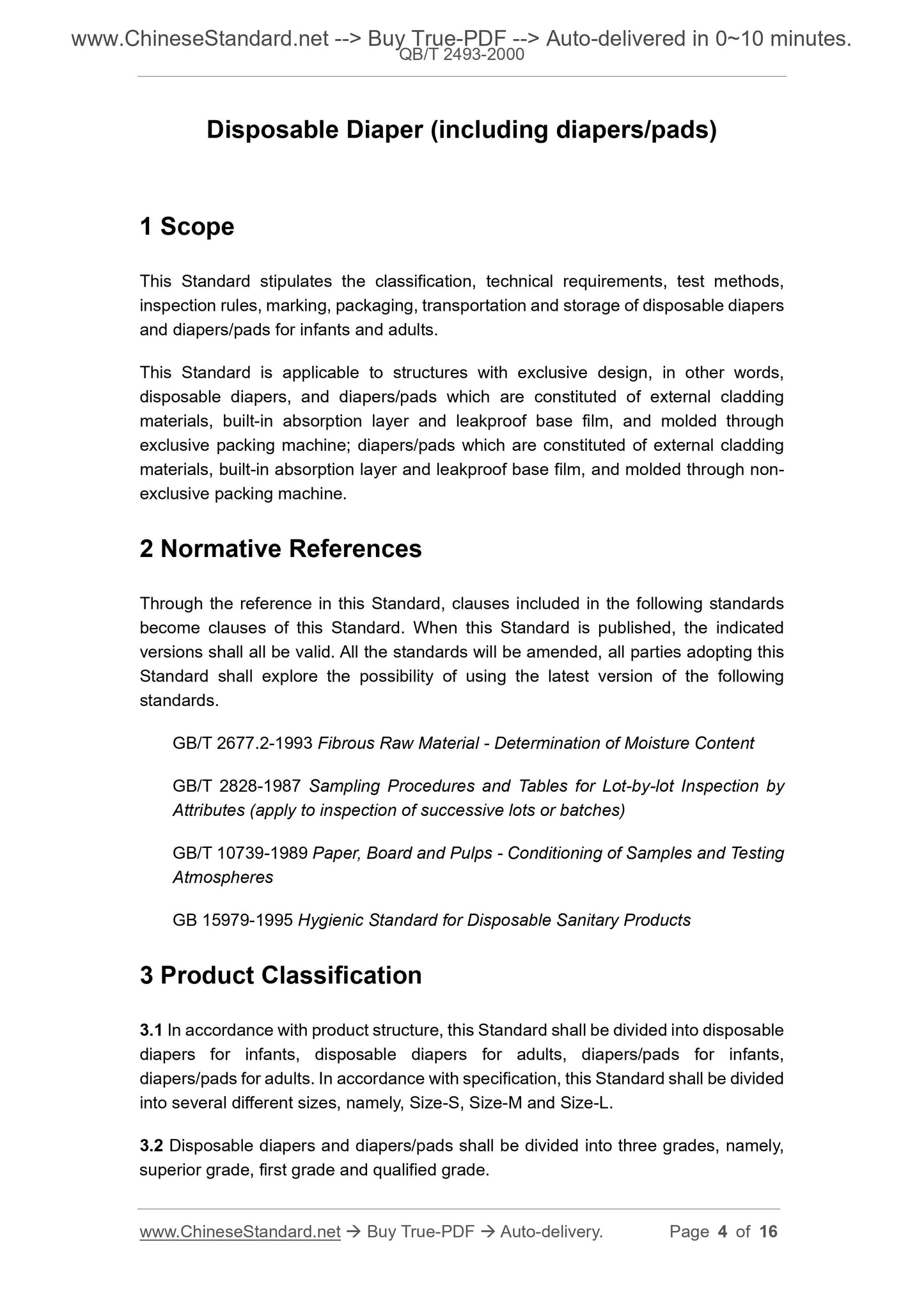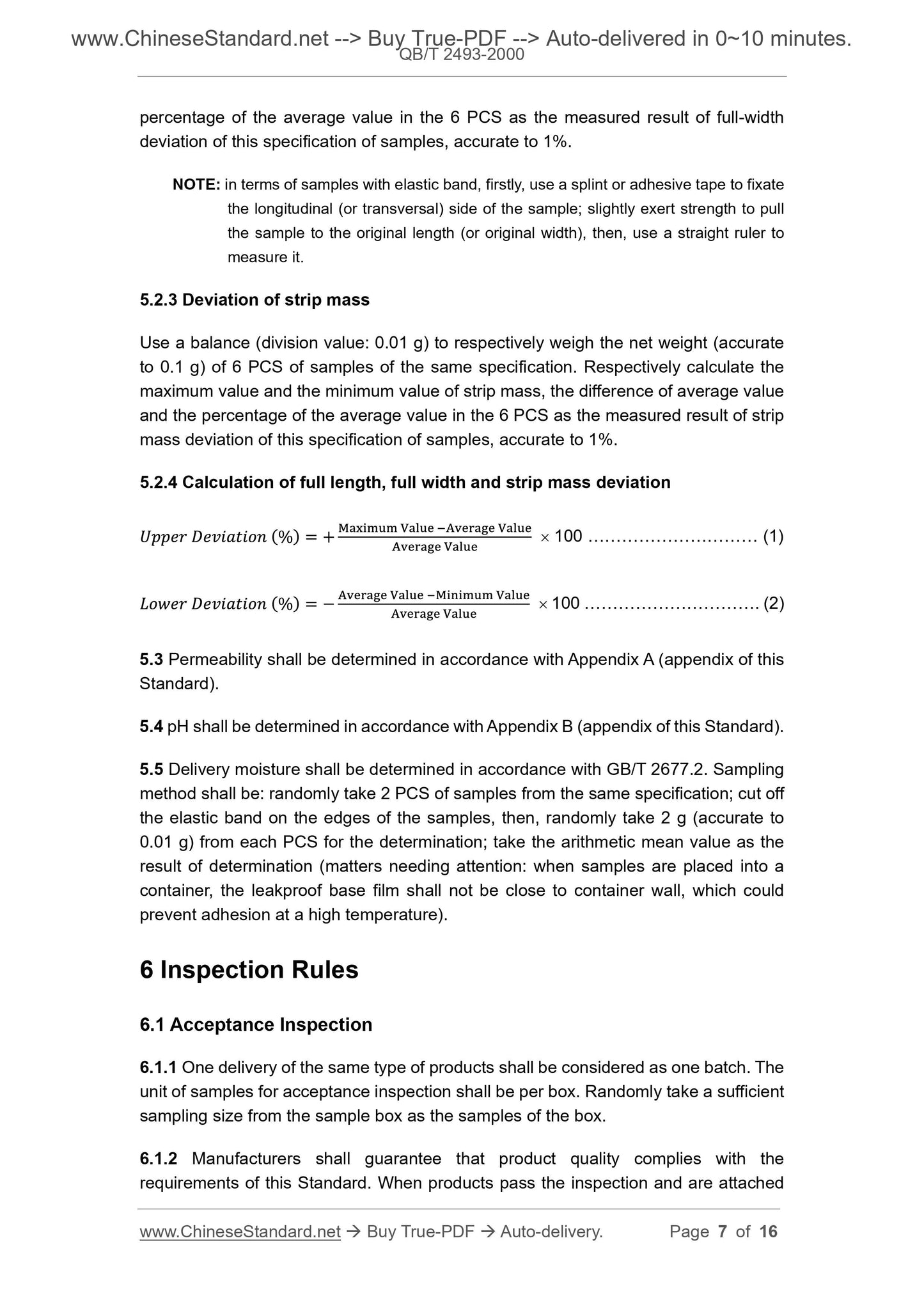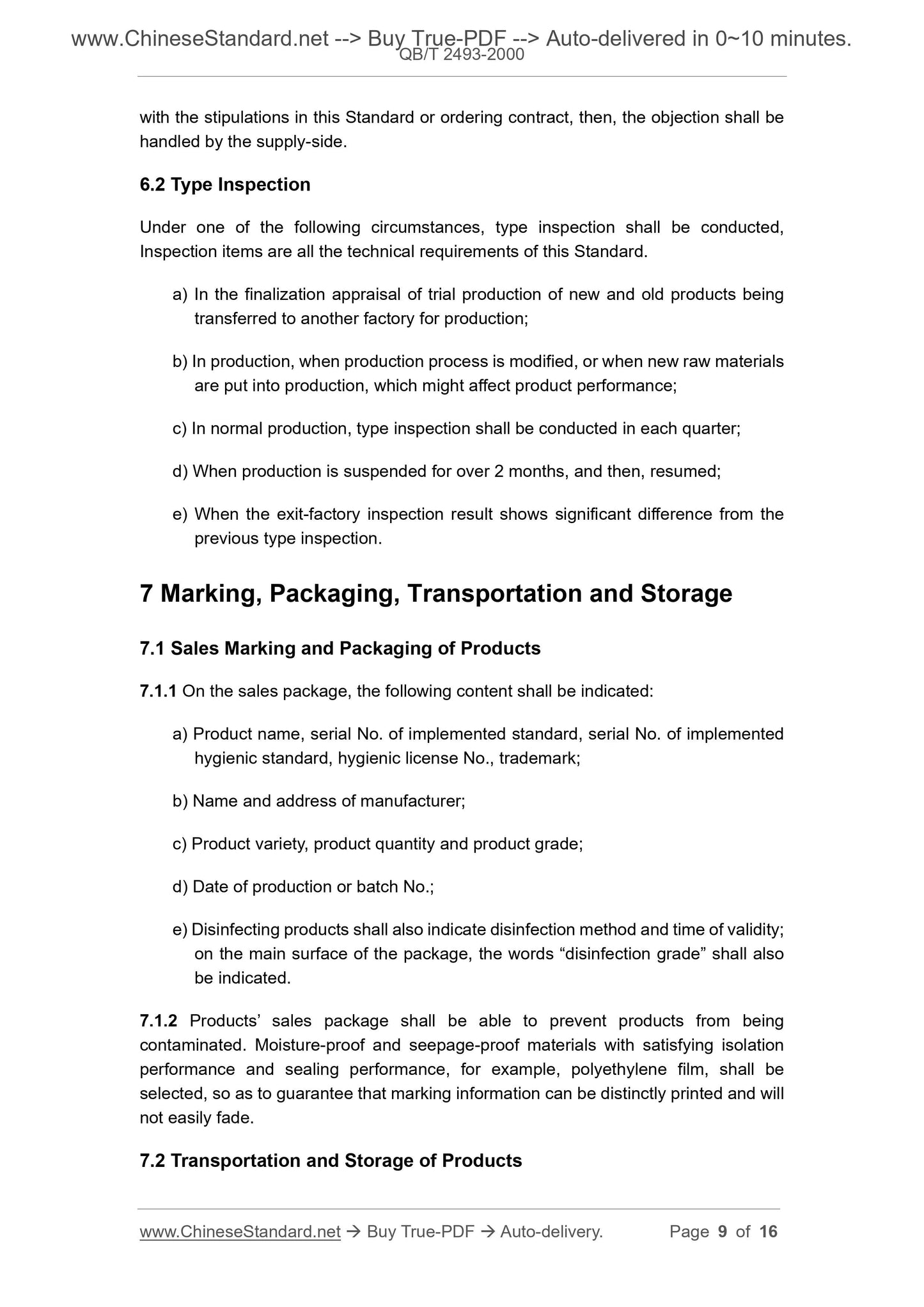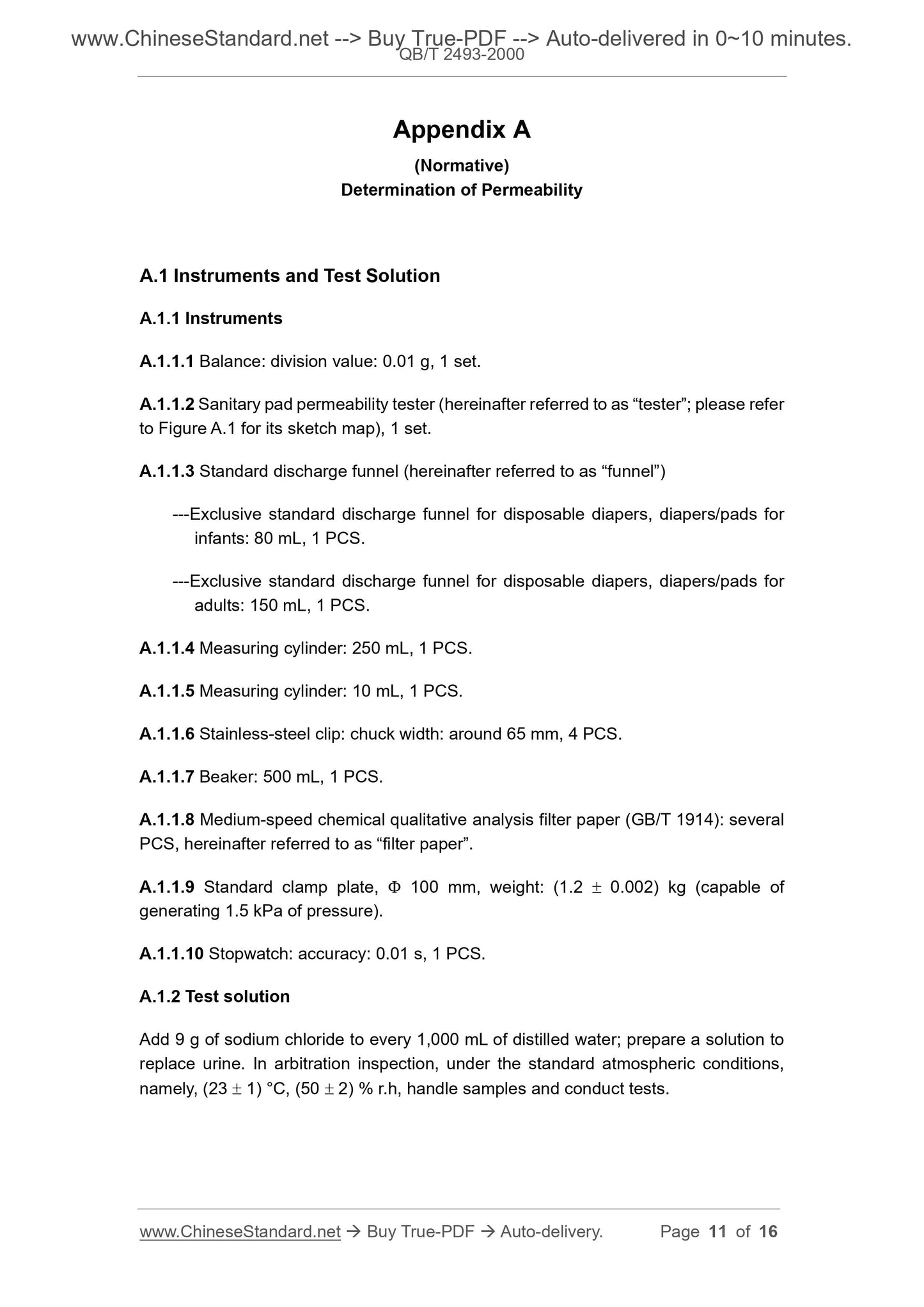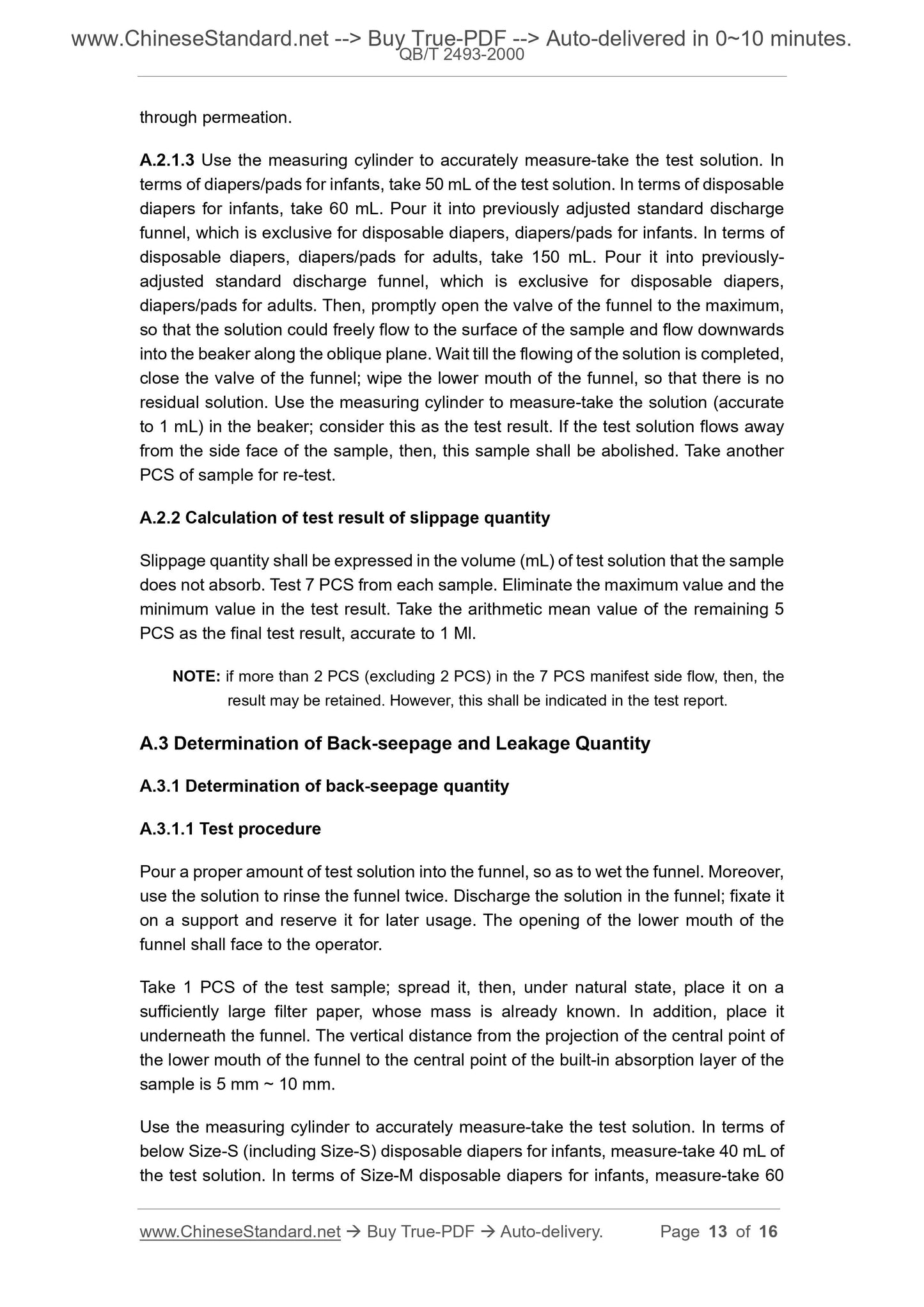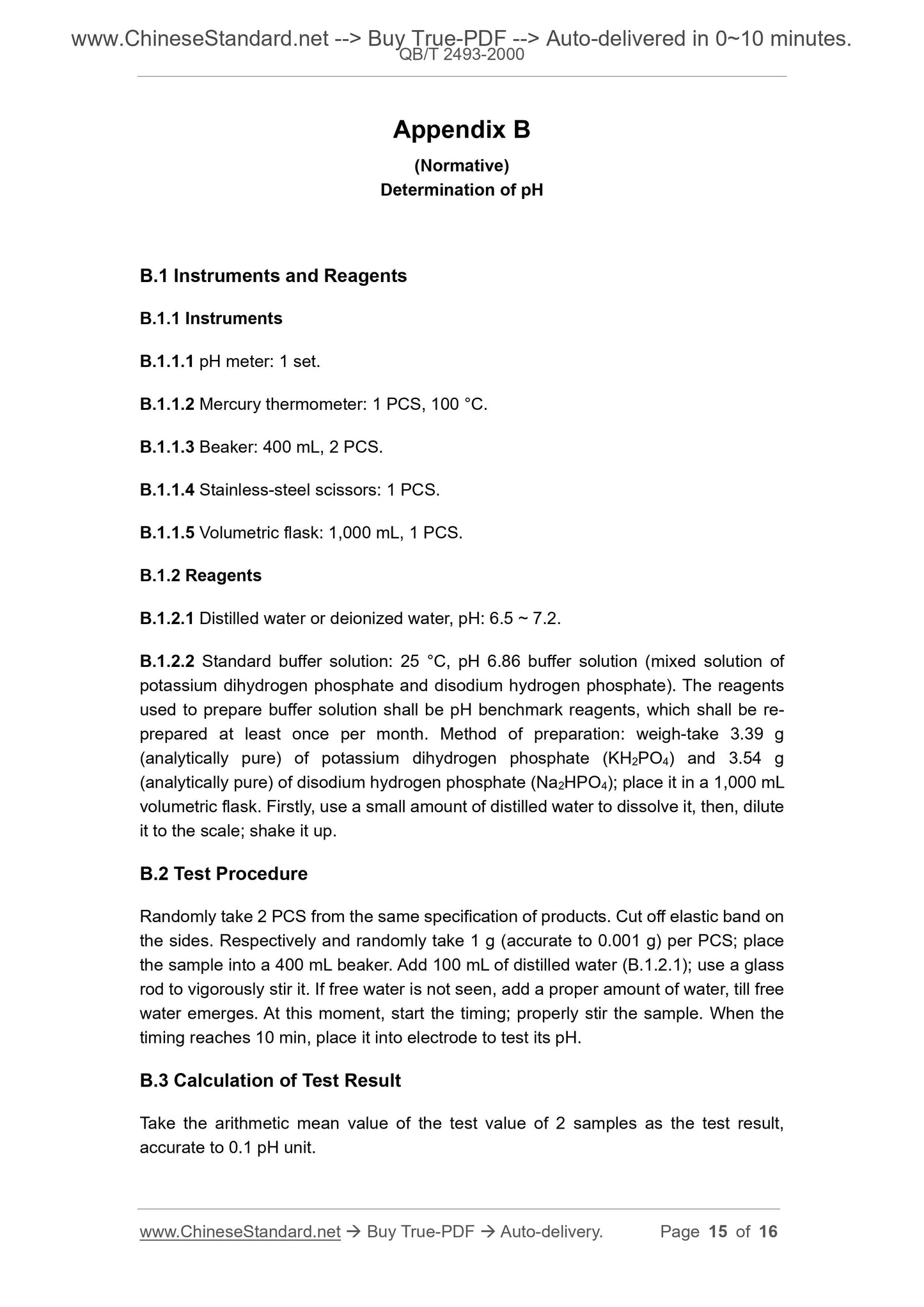1
/
of
8
www.ChineseStandard.us -- Field Test Asia Pte. Ltd.
QB/T 2493-2000 English PDF (QB/T2493-2000)
QB/T 2493-2000 English PDF (QB/T2493-2000)
Regular price
$85.00
Regular price
Sale price
$85.00
Unit price
/
per
Shipping calculated at checkout.
Couldn't load pickup availability
QB/T 2493-2000: Disposable Diaper (Including Diapers/Pads)
Delivery: 9 seconds. Download (and Email) true-PDF + Invoice.Get Quotation: Click QB/T 2493-2000 (Self-service in 1-minute)
Newer / historical versions: QB/T 2493-2000
Preview True-PDF
Scope
This Standard stipulates the classification, technical requirements, test methods,inspection rules, marking, packaging, transportation and storage of disposable diapers
and diapers/pads for infants and adults.
This Standard is applicable to structures with exclusive design, in other words,
disposable diapers, and diapers/pads which are constituted of external cladding
materials, built-in absorption layer and leakproof base film, and molded through
exclusive packing machine; diapers/pads which are constituted of external cladding
materials, built-in absorption layer and leakproof base film, and molded through non-
exclusive packing machine.
Basic Data
| Standard ID | QB/T 2493-2000 (QB/T2493-2000) |
| Description (Translated English) | Disposable Diaper (Including Diapers/Pads) |
| Sector / Industry | Light Industry Standard (Recommended) |
| Classification of Chinese Standard | Y32 |
| Word Count Estimation | 11,149 |
| Date of Issue | 2000-10-31 |
| Date of Implementation | 2001-04-01 |
| Quoted Standard | GB/T 2677.2-1993; GB/T 2828-1987; GB/T 10739-1989; GB 15979-1995 |
| Adopted Standard | ISO 11948-2-1997; NEQ |
| Regulation (derived from) | Industry-Science (2010) No.77 |
| Summary | This standard specifies: infants and adults diapers and diapers/pads product classification, technical requirements, test methods, inspection rules and signs, packaging, transportation, storage and other requirements. This standard applies to: a specially designed structure, ie from outer coating material, built- absorbing layer, leak-proof bottom film composition, through special packaging machine molding diapers, diapers/pads and non-dedicated packaging machine molding paper diapers/pads. |
Share
